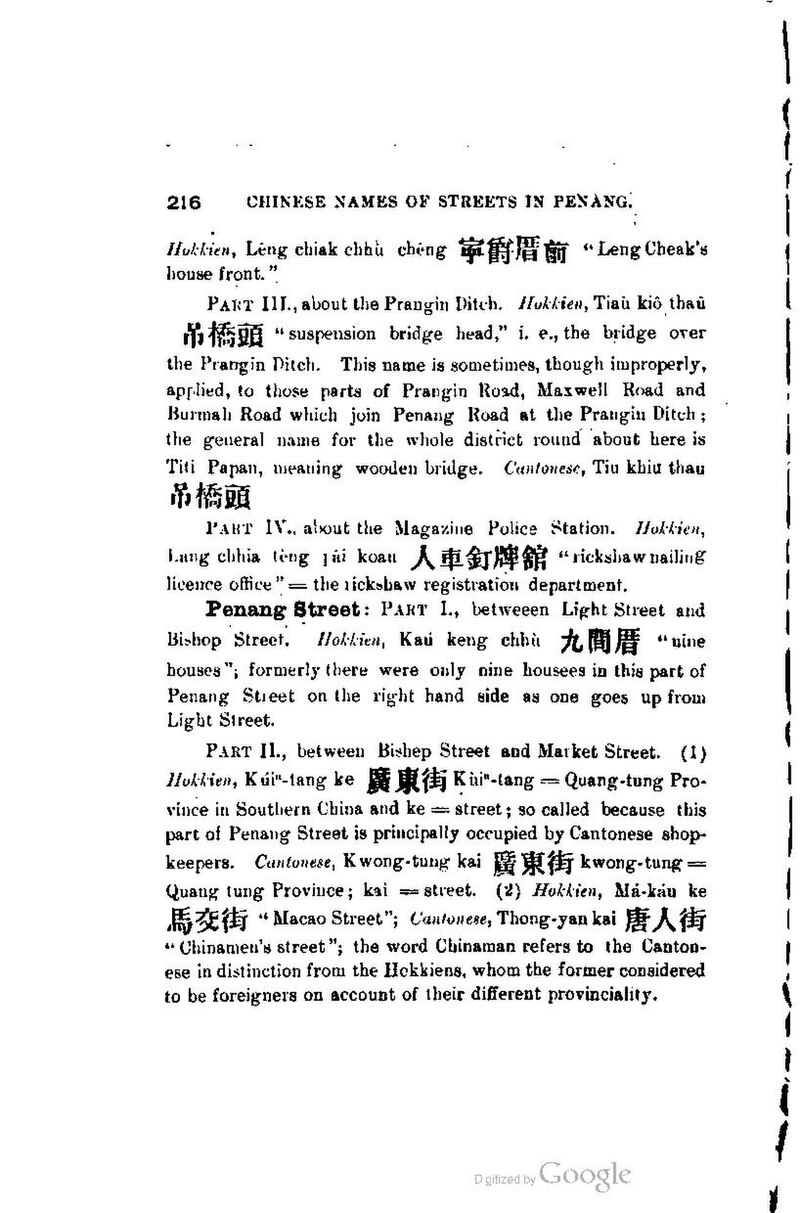This page needs to be proofread.
- Hokkien, Lêng chiak chhù-chêng 寧爵厝前 "Leng Cheak's house front."
- Part III., about the Prangin Ditch.
- Hokkien, Tiaù kiô thaû 吊橋頭 "suspension bridge head," i. e., the bridge over the Prangin Ditch. This name is sometimes, though improperly, applied, to those parts of Prangin Road, Maxwell Road and Burmah Road which join Penang Road at the Prangin Ditch; the general name for the whole district round about here is Titi Papan, meaning wooden bridge.
- Cantonese, Tiu khiu thau 吊橋頭
- Part IV., about the Magazine Police Station.
- Hokkien, Lang chhia tèng pâi koan 人車釘牌館 “rickshaw nailing licence office"=the rickshaw registration department.
- Penang Street:
- Part I., betweeen Light Street and Bishop Street.
- Hokkien, Kaú keng chhù 九間厝 "nine houses", formerly there were only nine housees in this part of Penang Street on the right hand side as one goes up from Light Street.
- Part II., between Bishop Street and Market Street.
- Hokkien, Kúiⁿ-tang ke 廣東街 Kúiⁿ-tang=Quang tung Province in Southern China and ke=street; so called because this part of Penang Street is principally occupied by Cantonese shopkeepers.
- Cantonese, Kwong-tung kai 廣東街 kwong-tung=Quang tung Province; kai = street.
-
- Hokkien, Má-káu ke 馬交街 "Macao Street";
- Cantonese, Thong-yan kai 唐人街 "Chinamen's street"; the word Chinaman refers to the Cantonese in distinction from the Hokkiens, whom the former considered to be foreigners on account of their different provinciality.
